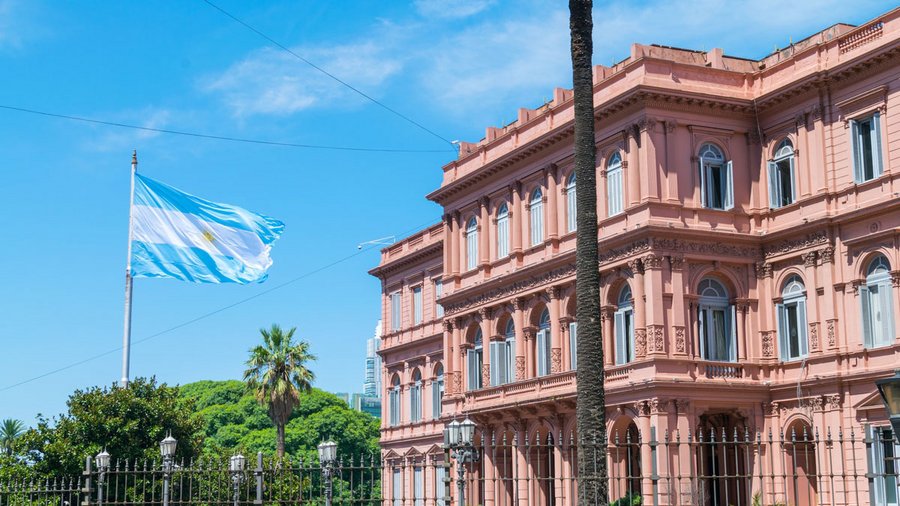Cultural Innovators Forum Travel Award recipient Muna Mohamed reflects on her time in Argentina
As I traveled through the bustling streets of Buenos Aires, I was struck by the vibrant art and culture that surrounded me. The colorful murals and sculptures seemed to come to life before my eyes, and I couldn't help but feel inspired by the creativity and passion of the Argentine people.
“A street art Mecca, with colors galore.
Splashes of paint adorn every wall,
Expressing the thoughts and feelings of all.
As I wander the streets, I can't help but reflect,
On the vibrant culture and all it's elect.
Buenos Aires is a city full of life,
A place where creativity and passion thrive.
From the sultry tango to the flavors of the land,
This city has captured my heart and hand.”
These works of art were not just decorative, but also convey powerful messages and represented the voices of the city's diverse communities. Street art in Buenos Aires, the capital city of Argentina, has a rich and vibrant history. It is a unique form of expression that has been used by artists to communicate their ideas and thoughts to political stance, as well as to beautify the city and engage with the community.
“Each piece spoke to me, telling a tale
Of the city's history and social scale
I saw portraits of leaders and activists,
Voicing their opinions and making lists
Of the things they wanted to change and improve
Their messages resonated, they couldn't be removed
I saw graffiti tags and stenciled designs
Depicting the city's culture, intertwined
With the struggles and triumphs of its people
A history rich and diverse, a mosaic, on display
The street art in Buenos Aires conveys
Messages of culture, politics, and ways
To improve and progress, to unite and stand strong
It's a reflection of the city's soul, all along.”
Street art in Buenos Aires can be traced back to the 1960s and 1970s, when political graffiti appeared on the city's walls as a form of resistance against the military dictatorship. In the 1980s, street art evolved to include more artistic elements, such as murals and stencils, as well as a wider range of themes, including social and cultural issues.
Today, street art in Buenos Aires is a diverse and multifaceted art form that includes a wide range of styles and techniques, from traditional graffiti to more contemporary approaches like installations and projections. It can be found in various neighborhoods throughout the city, from the historic San Telmo district to the trendy Palermo neighborhood. From colorful murals to intricate graffiti art, La Boca's street art is a testament to the creativity and talent of the city's artists.
As I reflect on my time in Argentina, I am reminded of the power of sports and art to bring people together and inspire us to be our best selves. Whether it's on the field or on the stage, the beauty of these pursuits lies in their ability to transcend boundaries and bring people from all walks of life together in a shared celebration of talent and passion. I was struck by the sheer talent of the Argentine athletes, who brought a unique energy and flair to their respective sports. Whether it was watching a thrilling soccer match at La Bombonera or admiring the grace of the tango dancers at a local milonga, I was constantly in awe of the skill and dedication of these performers.
“But sports in Argentina are more than just a game
They are a way to express identity and fame
From the barrios to the elite
They are a way to connect, compete
So, as I watch these sports unfold
Their stories are told
So here's a ballad for the youth,
As they play soccer with their hearts
The ball becomes their canvas, their art
As they skillfully weave and dart
A reflection of Argentina’s culture and heart
Sports truly are a work of art”
In the end, my experience in Argentina was one of great growth and understanding. I am grateful for the opportunity to witness the incredible impact that both sports and art have on this dynamic and vibrant city. They bring people together and provide a sense of community and belonging that is truly special and unique. My experiences have taught me the importance of intersectionality and the ways in which sports and art can be a force for positive change in the world. Whether it's through promoting diversity and inclusion, or using the platforms to advocate for social justice, I believe that both have the power to bring people together and create a more just and equitable world. So here's to the Argentine athletes and artists who showed me the true meaning of sports and art – may their talents continue to inspire and uplift us all.
Muna Mohamed is the co-founder of the Cedar Riverside Community Travelling Basketball Program (CRCTB), which housed the first ever AAU traveling basketball for Muslim female athletes. As a coach, she focuses on providing culturally-tailored sport program for East African girls. Currently, she is working on her starter up, Modest and Active, which will provide a provide modest active wear line that inspires women and girls to participate in an active lifestyle without comprising cultural and religious values. Muna is inspired to use coaching as a mechanism to empower young girls to engage in sports, and to be an active role model off and on the basketball courts. Muna took part of in a community-based research project 'The Impact of Culturally Sensitive Apparel Co-Design Project on the Physical Activity of East African Adolescent Girls', which designed and created culturally appropriate active wear for East African girls. She helped to initiate the creation of the first-ever sports uniform for Muslim girls. Muna received her Masters of science in kinesiology at the University of Minnesota. Prior to her studies, she was a youth basketball coach in the Cedar Riverside community.


